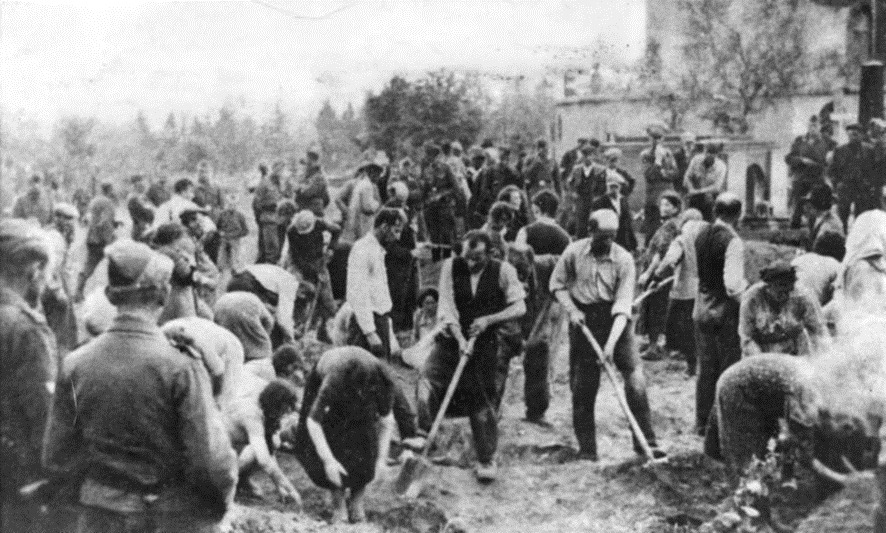Each year on September 29 – 30, we commemorate the anniversary of the Babi Yar massacre – one of the most horrific episodes of the Holocaust. In 1941, following the Nazi occupation of Kyiv, over 33,000 Jewish men, women, and children were murdered in just two days in the ravine of Babi Yar. Deceived by a public order promising resettlement, they were led to the outskirts of the city, stripped of their belongings and clothes, and executed en masse by SS units and local collaborators. It was the largest single massacre carried out by Nazi forces up to that point.
But Babi Yar was not only a site of mass murder, it became a symbol of silence. For decades, Soviet authorities suppressed the memory of the Jewish victims, refusing to acknowledge the Holocaust’s specific impact. It wasn’t until the powerful poem by Yevgeny Yevtushenko and Dmitri Shostakovich’s 13th Symphony that the world began to confront the truth of what happened there.
In total, between 100,000 and 150,000 people were killed at Babi Yar, including Roma, Soviet POWs, communists, and psychiatric patients. The ravine became a graveyard for all those deemed expendable by the Nazi regime.
On this solemn anniversary, remembering Babi Yar is not just about honouring the dead, it is about defending the living. It is a call to resist antisemitism, racism, and all forms of hatred. It is a reminder that silence enables violence, and that memory is a form of justice. As we reflect today, we commit to keeping the truth alive, so that such atrocities are never repeated.
Dmitri Shostakovich’s 13th Symphony https://youtu.be/A2XgKban1-c
Serra Húnter Fellow of Sociology at Universitat Rovira i Virgili.
Former DAAD-Gastprofessorin at Julius-Maximilians-Universität Würzburg


